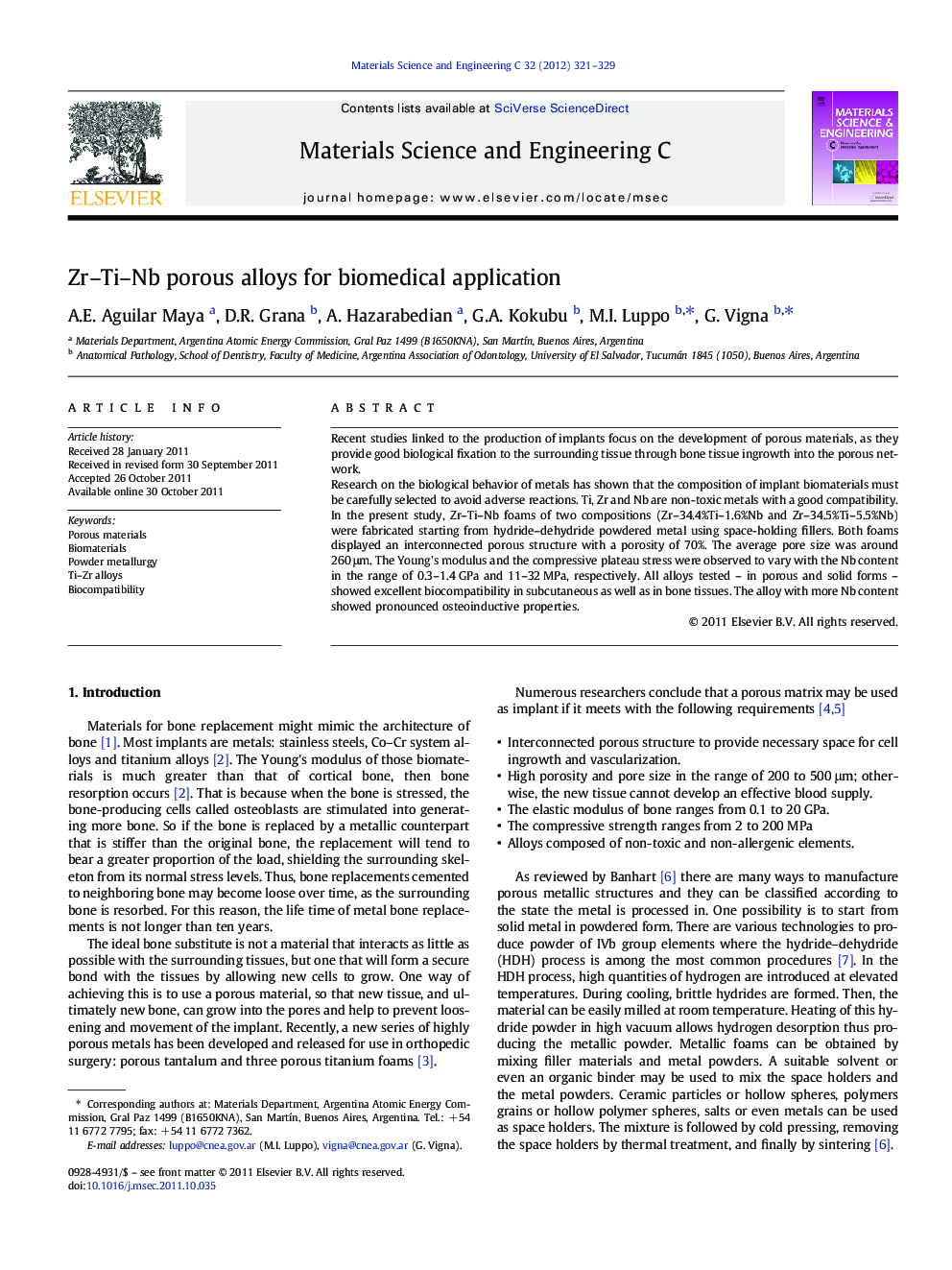| Article ID | Journal | Published Year | Pages | File Type |
|---|---|---|---|---|
| 1429587 | Materials Science and Engineering: C | 2012 | 9 Pages |
Recent studies linked to the production of implants focus on the development of porous materials, as they provide good biological fixation to the surrounding tissue through bone tissue ingrowth into the porous network.Research on the biological behavior of metals has shown that the composition of implant biomaterials must be carefully selected to avoid adverse reactions. Ti, Zr and Nb are non-toxic metals with a good compatibility.In the present study, Zr–Ti–Nb foams of two compositions (Zr–34.4%Ti–1.6%Nb and Zr–34.5%Ti–5.5%Nb) were fabricated starting from hydride–dehydride powdered metal using space-holding fillers. Both foams displayed an interconnected porous structure with a porosity of 70%. The average pore size was around 260 μm. The Young's modulus and the compressive plateau stress were observed to vary with the Nb content in the range of 0.3–1.4 GPa and 11–32 MPa, respectively. All alloys tested – in porous and solid forms – showed excellent biocompatibility in subcutaneous as well as in bone tissues. The alloy with more Nb content showed pronounced osteoinductive properties.
► ZrTiNb foams were fabricated starting from powdered metal using space-holding fillers. ► The foams displayed an interconnected porous structure with a porosity of 70%. ► The Young´s modulus and the compressive plateau stress vary with the Nb content. ► All alloys tested showed biocompatibility in subcutaneous as well as in bone tissues. ► The alloy with more Nb content showed pronounced osteoinductive properties.
